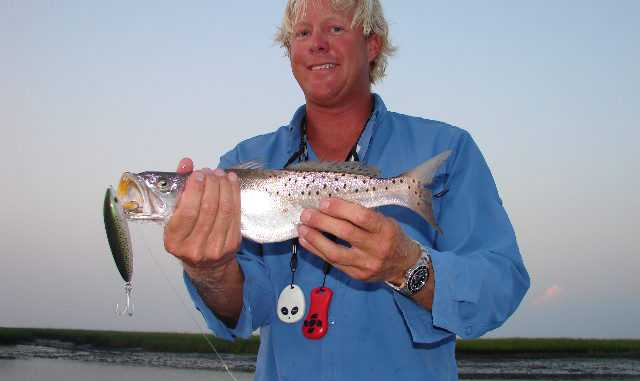
More than 80 percent of anglers participating in a June survey said they saw lethargic spotted seatrout following the extremely cold weather earlier this year, and almost the same number of anglers said the fishing success had been adversely affected by the cold snap.
One hundred fifty angler responses from eight coastal counties responded to the South Carolina Department of Natural Resources survey aimed at discovering the weather’s potential impact on the stock.
The survey asked anglers if they personally observed any spotted seatrout in South Carolina waters that were impacted by cold waters.
Fifteen percent of those responding said they had, with 24 percent saying they hadn’t.
But even more revealing was the descriptions of what was witnessed by anglers while on the water.
Eighty-three percent said they noticed lethargic fish, with 26 percent reporting dead fish and another 26 percent aware of unusual schooling.
Lethargic fish are a concern because they are particularly vulnerable to predators like dolphin and cormorants.
While fish size reported during the survey was perhaps inconclusive with 50 percent reporting catches of trout measuring 14 inches or shorter and the other half reporting catches of fish larger than 14 inches, fishing success rates were another story.
A whopping 78 percent of anglers said that the spotted seatrout success since February was “well below average” or “below average.”
I t is helpful to remember that spotted seatrout are not as hearty as redfish when it comes to cold, or even tagging. In fact tagging studies of spotted seatrout by SCDNR officials were suspended in 1994 because data suggested high post-release mortality.
Data shows that 45-degree water temperatures are close to the point of mortality for spotted seatrout, and temperatures briefly slipped lower than that threshold this past winter.
“Trout are vulnerable to over-winter kills, and the last large kill was documented during the winter of 2000-01,” SCDNR’s Steve Arnott said.
During that winter, temps dipped to about 42-degrees.
However, Arnott said trout mature at a young age, and are able to bounce back rapidly from natural mortality.
“Spotted seatrout are mature at 1 to 2 years old and, while some can live for 10 years, an average mortality age is just three years old,” he said.




Be the first to comment